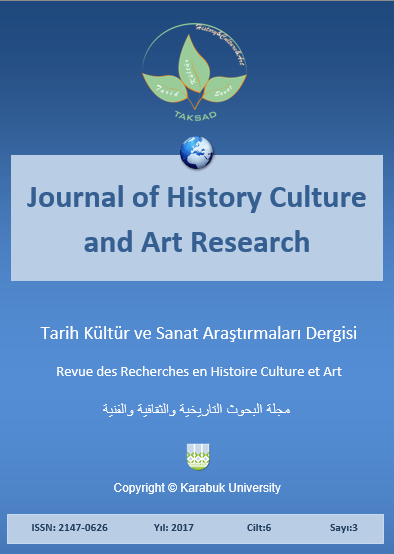Designing Museum of Anthropology with Attitude of Preserving Regional Indexes in Hormoz Island
DOI:
https://doi.org/10.7596/taksad.v6i3.1010Keywords:
Museum, Anthropology museum, Museum design, Regional indexes, Hormoz port.Abstract
Various geographical regions in Iran can be appropriate subject for study in the field of anthropology museum. This research addresses anthropology study and museum design in Hormoz port. Designing anthropological museum in Hormoz port can be a step in identifying and preserving the regional indexes in this area. In this museum, various valuable parts can be shown such as clothing style, architectural type and art and a lot of cultural and historic identity symbols and regional indexes. Thus, the main question of this paper is: how can one achieve an appropriate solution for anthropology museum building design by relying on regional indexes? On anthropology museum, by establishing appropriate solution and regional people participation, who show interest in promoting and preserving their own regional culture, these museums can be established easier than common museums. In this paper, given the wide range of study in theoretical basics and framework, descriptive-analytical as well as analytical and comparative methodology is used. Therefore, this study offers design solutions based on regional culture preservation.
References
Alpago Novello, A. (2005). Regional architecture. Translation by Sadat Afsari. Tehran: Space cultural scientific institute.
Carmona, M. (Ed) (2010). Public places, urban spaces: the dimensions of urban design. London: Routledge
Chen, Fei (2011). Traditional architectural forms in market oriented Chinese cities: Place for localities or symbol of culture? Habitat International, 35:2, 410-418.
Eini, N. (2007). Identity. Tehran: Science publication.
Ellin, N. (2013). Integral Urbanism: a context for urban design. In Resilience in Ecology and Urban Design, pp. 63-78. Netherlands: Springer.
Falamaki, M. (2014). Identity and pattern: a study in present-day Iran identity and civilization Islamic-regional pattern. Tehran: Maaref publication office.
Khashei, V. (2011). Designing cultural policy making in higher education, cultural and planning study office of sciences. Tehran: Studies and technology ministry.
Khatibizadeh, M. (2010). Hormozgan people clothing: women clothing. Tehran: Ilaf publication.
Kingston, H. (2009). Vernacular Architecture and Regional Design: Cultural Process and Environmental Response. London: Elsevier Ltd.
Li, J. H. & Bao, H. Y. (2012). Thoughts on Vernacular Architecture Research and Contemporary Regional Architectural Creation. Applied Mechanics and Materials, 174, 1656-1659.
Mazaheri, M. (2013). Studying the regional culture and architecture affected by it on the urban development, case study: Hamedan. First national conference of urbanity and architecture throughout the time.
Mehrizi, M. (2005). Cultural topics. Tehran: Studies and human science development institute.
Mirshekari, M. (2011). Anthropology and museums. Tehran: Science publication.
Najafi, M. (2013). Identity: on the theory of national identity in Iran and its reflection in culture, history and politics. Tehran: Arma publication.
Richards, G. & Palmer, R. (2010). Eventful Cities: Cultural Management and Urban Revitalisation. London: Elsevier.
Sharafi, E. (2013). Role of Lorestan regional culture in establishing resistance literature. National conference of studying the evolution of Lorestan regional literature (Kalehbad), University Jahad cultural assistance, branch of Lorestan.
Tohidfam, M. (2006). Cultural development obstacles in Iran. Tehran: Baaz publication.
Downloads
How to Cite
Issue
Section
License
All papers licensed under Creative Commons 4.0 CC-BY.- Share — copy and redistribute the material in any medium or format
- Adapt — remix, transform, and build upon the material for any purpose, even commercially.
Under the following terms:
Attribution — You must give appropriate credit, provide a link to the license, and indicate if changes were made. You may do so in any reasonable manner, but not in any way that suggests the licensor endorses you or your use.
- No additional restrictions — You may not apply legal terms or technological measures that legally restrict others from doing anything the license permits.







